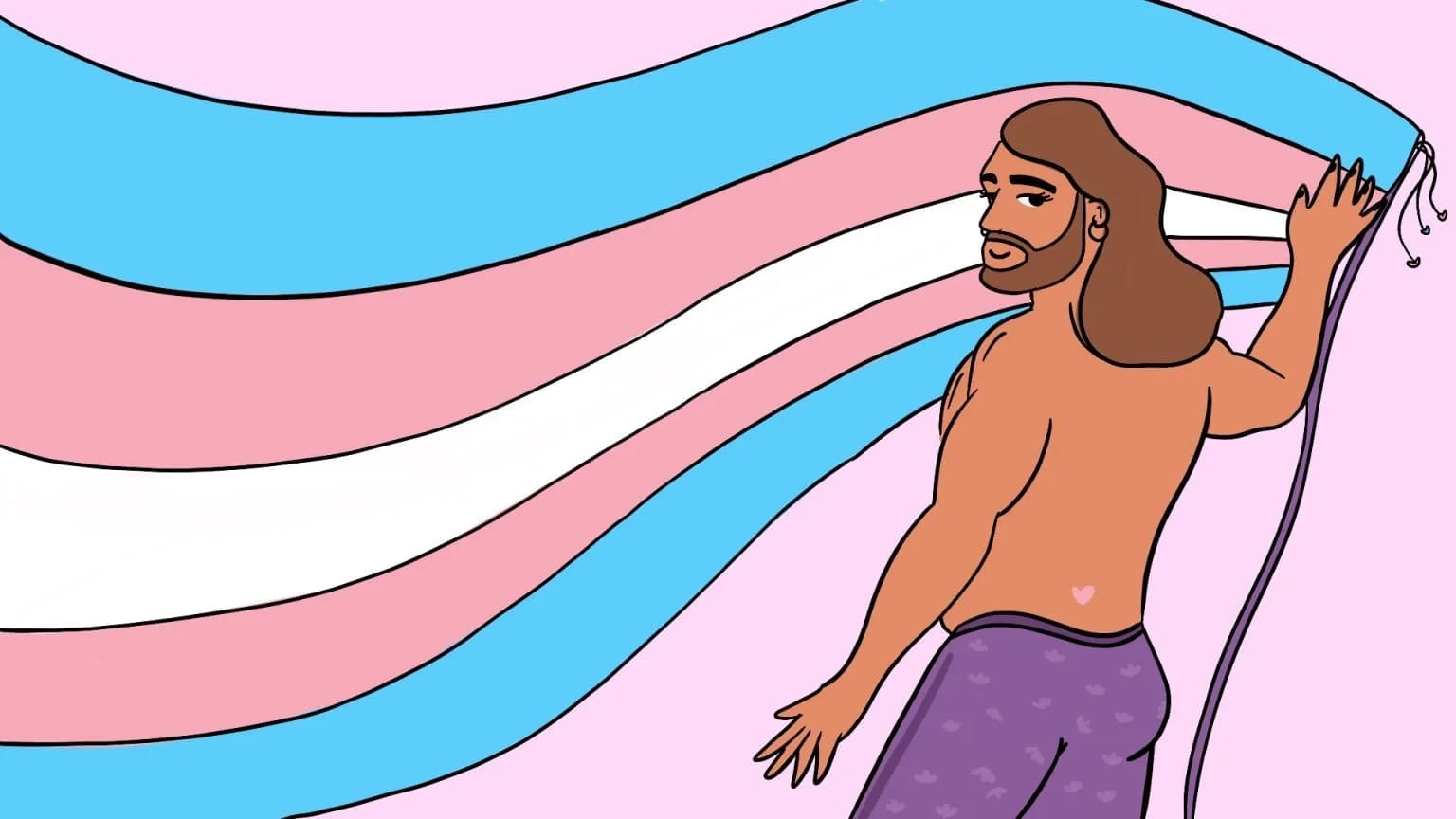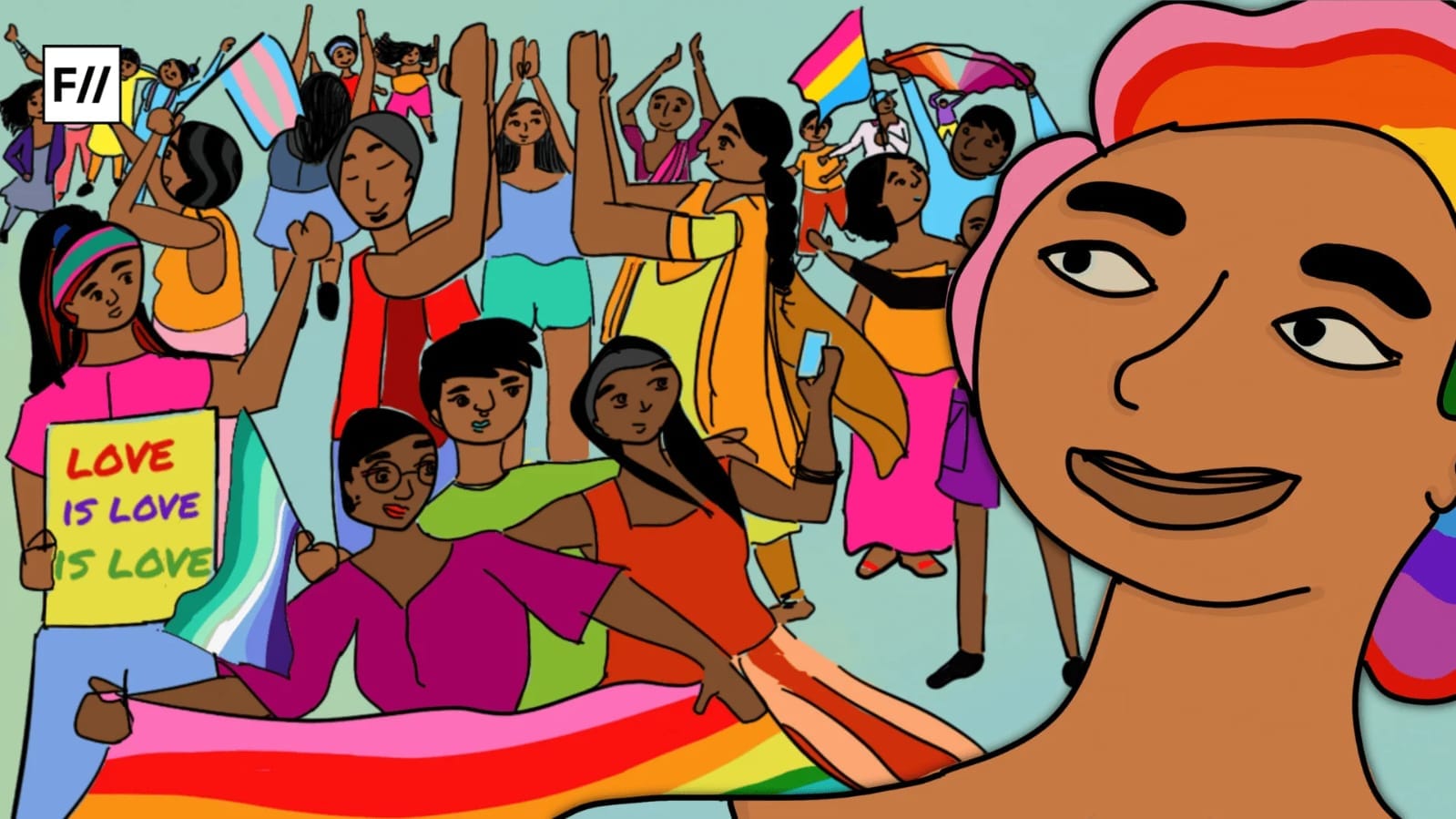Who wears the pants in a lesbian relationship? This is something Indian directors and scriptwriters have actively tried to clarify in the sapphic romances they attempt to represent on screen. There is the assertive butch, lacking womanly graces and bold when pursuing her love-interest, who is the epitome of femininity. The shy femme is taken in. A romance is kindled and passions are rife.
The butch/femme spectrum has always been a contentious one, with some claiming that the aesthetic mirrors heteronormativity, while others feel that the femme and butch identities are not an attempt to mimic traditional gender roles, but in fact, exemplify the performativity of gender.
The butch/femme spectrum has always been a contentious one, with some claiming that the aesthetic mirrors heteronormativity, while others feel that the femme and butch identities are not an attempt to mimic traditional gender roles, but in fact, exemplify the performativity of gender.
While the butch/femme archetype dominated the lesbian feminist discourse in Europe and America, this aesthetic has also found its place in the tight niche of Indian lesbian media representation.
Mainstream Bollywood’s first ever film dealing with lesbianism was Karan Razdan’s ‘Girlfriend’, where the archetype is blatant. Tanya, a strapping man-hating kickboxer champion, is obsessively in love with her best friend Sapna, a petite and delicate woman. In fact, Tanya exemplifies the outdated “murderous, mannish” lesbian trope.
Interestingly, an older film dealing with lesbian love was more sensitive in its portrayal. In Deepa Mehta’s ‘Fire’, while there isn’t a villainous butch, aspects of the spectrum exist. In a scene where Sita and Radha are dancing in jest to a Bollywood tune, Radha takes on the role of a conventional coy heroine, wearing her saree with hair let down, while Sita is in an oversized suit and emulating the unoriginal flirtatious bravado of a typical Indian hero.
Like Fire, while on-screen sapphic romances nowadays arguably conform to the archetype, it it’s not palpable. But, the dynamic isn’t completely absent: one always wears the pants in the relationship.
One example is the 2021 AltBalaji series ‘The Married Woman’. Neither of the women is overtly masculine. But, Peeplika, a sexually fluid woman who sometimes dons a pantsuit is juxtaposed with the saree wearing dutiful housewife Aastha. In the first episode, Peeplika’s husband playfully asks her, “Oh so you’re in a lesbian relationship, and I’m the woman?” In the same episode, he describes Aastha as an “innocent si sweet si aurat” (an innocent and sweet woman).
The ripped, sexually liberal and tattoo bedaubed Umang in the Amazon Prime web series ‘Four More Shots Please’ is also, arguably, a relatively retrained depiction of the butch archetype.
An exception to the rule of a veiled portrayal of the butch/femme aesthetic is in ‘Geeli Pucchi’ a segment from the 2021 anthology film Ajeeb Dastaans. Bharti Mandal, a plaid wearing woman, does hard labour in the factory. When the traditional, jewellery-adorned Priya starts a desk-job there, people are quick to point out the glaring difference. Looking at Bharti, a man remarks, “unhe zyada na dekhiye, unhe thodi der aur dekhenge inke chehre se daadi muuche nikal aaenge” (don’t look at her too long, if you do, a beard and moustache will sprout from her face). In a review, Sudipta Das wrote that Bharti’s character “reinforces the ‘butch lesbian’ stereotype.”
It is worth noting that there is an Indian sapphic romance bereft of the femme/butch aesthetic — it is the doomed affair of Kiran and Delilah in the 2004 Malayalam film ‘Sancharram’ (The Journey).
Here’s the question: given the limited lesbian representation in Indian media, is the portrayal of such an aesthetic problematic? The thought of a largely unaware Indian audience consuming such media and assuming that aspects of heteronormativity are indispensable to same-sex relationships is certainly disturbing. Das posed the same question — “One can also ponder upon if the reinforcement of the ‘butch lesbian’ stereotype is caricaturist or the ambiguity of gender expression of the person adds value to the enormity of queerness.”
Gaw., a gender-fluid queer student in Bangalore observed that the issue is nuanced. Ze explained that tropes are constantly perceived differently. Ze said, “the thing is that young queers consume this content, which is usually made by cis-het people, and constantly question “wait am I supposed to be like this or like this?” I for one had a tough time dealing with my masc and femme sides.”
Roheet Bose, a 20-year-old queer student also stressed on the nuance of this spectrum. They said, “Sure, you could see it as a remnant, or even a relic of heteronormativity, but in doing so you’re policing lesbians to fit a certain mould, when you’re saying their gender expression is perpetuating an archetype.” They added, “People don’t understand that simply because there are certain overlaps, it doesn’t mean queer people are doing a disservice to themselves by either fitting or not fitting a mould.”
As long as the portrayal is sensitive, the butch/femme aesthetic should not be a threat. Butch lesbians exist, and the fluidity of gender expression is a reality. The existence of all queer people should be normalised on screen.
Needless to say, there is a dire need for greater queer screen presence. Arguably, there’s a more urgent need for representation of queer women, given the intersection they are anchored in. Recently, there have been commendable efforts in this regard. So, as long as the portrayal is sensitive, the butch/femme aesthetic should not be a threat. Butch lesbians exist, and the fluidity of gender expression is a reality. The existence of all queer people should be normalised on screen. Striving for supposedly “normal lesbian” characters, snuffs out the gender expressions of many. A 20-year-old queer girl echoed these sentiments. She said, “In the case of media representation, my stand is trying to win the smaller battles instead of dismissing all trials just because they don’t achieve everything at once.”
However, it can also be argued that there should definitely be an attempt to achieve everything at once, given the disparate want of queer awareness in India, which is why there should be an attempt to craft queer characters and relationships, which are not gender binary codified and are completely opposed to heteronormativity. But, by only accepting a certain kind of lesbians and gay men, aren’t we falling into the confines of stereotypical gender roles? As Roheet observed, the unfortunate reality is, “no matter how queer people choose to express their gender, it’ll always be compared to heteronormativity, since that’s the ‘default standard’”.
So, while the butch/femme spectrum is still persisting in Indian reels, there need not be an active effort to subvert it. Decrying the aesthetic as a shadow of heteronormativity is doing grave injustice to the gender expressions of countless queer folks. The problem comes in when such archetypes are used for gags or are ridiculously caricaturist, as in ‘Dostana’. As long as queer characters are realistically written, as long as lesbian characters are developed sensitively (butch, femme, neither or in-between), we can hope for sapphic romances on Indian screens, which are unforced, predictable and utterly heart-warming.
References
- Hopkins, JA. 2009. CONVENIENT FICTIONS: THE SCRIPT OF LESBIAN DESIRE IN THE POST-ELLEN ERA. Victoria University of Wellington. Retrieved from Research Archives. https://researcharchive.vuw.ac.nz/xmlui/bitstream/handle/10063/1108/thesis.pdf?sequence=1
- Das, S (2021). Geeli Pucchi: Exploring the Messiness of Caste and Sexuality. FeminisminIndia.com. Accessed on 12th May, 2021.
Shashwathi Sudhakar is a second-year humanities student. You can find her on Twitter, Instagram and LinkedIn.





butch and femme cannot simply be reduced to ‘masculine’ and ‘feminine’ as is being done in the article pls read up on butch/femme history before giving ignorant takes :/